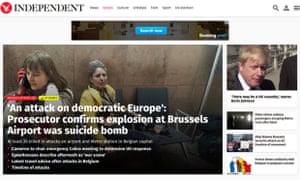MM30 – PG52.
·
American Reality shows – they’re glossy,
manipulative, and highly addictive. And they often open with the words: ‘Some
scenes have been recreated for entertainment purposes’. So where exactly is the
‘reality’?
·
Jean Baudrillard argues in his book Simulacra
and simulation that: The simulacrum is never that which conceals the truth – it
is the truth which conceals that there is none. This suggests that In
contemporary society our system of representations, symbols and images has
become so vital, it supersedes the truth it claims to signify to the extent
where that truth fades into oblivion, or fails to exist at all.
·
Baudrillard’s theory is particularly appropriate
to the study of reality television and to the exploration of the idea that on
TV, we rarely see a ‘true’ reality. Situations are manipulated, events are
dramatised and incidents are staged and enhanced ‘for entertainment purposes’.
·
Paradoxically, ‘reality’ is constructed within a
genre that claims to give the audience the ‘truth’ as it actually happened. In
other words, they create a ‘truth’ that never has, or arguably never would have
existed in reality.
MM30v – PG58-60.
·
Indeed, the history of media technology in the
twentieth century was built on this premise: cinema, television, music video
and computer games all invite the audience to suspend disbelief and inhabit a
parallel fantasy world made possible only by successive advancements in
technology.
·
The last thirty years has seen a profusion of
films, television and pop music that play with audience expectations in their
use of intertextual references and self-reflexive allusions. However, perhaps
what marks out the genuinely postmodern from ironic critique is the way in
which audience appropriation of new media technologies is both naturalised and
creative.
·
Throughout the history of television and cinema,
audiences have traditionally been very accepting of the ways in which media
texts invite the viewer to confront their own perception of reality. As the
silent movie era moved into that of the talking picture, for example, audiences
did not recoil with incredulity that the image projected on to the screen was
actually speaking, but accepted the concept as natural and unaffected.
·
By the same token audiences have been extremely
imaginative in the way in which new media technologies have been incorporated
into their day-to-day existence.
·
Of course the proliferation of the internet from
the late 1990s onwards has accelerated and heightened people’s routine use of
technology in their day-to-day engagement with society and culture. And,
indeed, it is befitting that the proliferation of laptops, wireless and
broadband technology in the Noughties has liberated people from viewing
computer technology as fixed to work stations previously associated with word
processing and gaming.
·
The internet has infused contemporary
civilisation with a new vitality that can be felt across various media forms
including television, film, pop music and the press.
·
Various theoreticians have argued that the appropriation
of media texts is symptomatic of cultural malaise. Frankfurt School theorists
like Theodore Adorno, for example, viewed the gramophone record and cinema as a
means of distracting the working class from their disadvantaged social
positions.
MM33 – PG13.
·
Michel Gondry is the herald of child-like naïve
cinema. He has the ability to encapsulate human emotion in its barest form and
portrays it in a way only a child could see.
·
His complicated, endearing and
visually-captivating films are one in a million, creating his own distinctive
style that clearly comes from his experiences. His approach to directing is fun
and compelling, focusing on dream-like scenarios that shouldn’t happen anywhere
else but your mind. Michel Gondry’s films can be described as Surrealist or
Fantasy cinema or even avant-garde; his style is best characterised through his
use of animation and mise-en-scène.
MM33 – PG17-18.
·
Without doubt people in the creative industries
are often the first to adopt, and then the first to discard, new technologies.
Whether it’s aspects of new social media such as Twitter, or the technology
that enabled James Cameron to take a huge innovative leap in Avatar and to win
three Oscars in 2009 (albeit in the technical categories, not Best Picture),
the media industry will be the first to exploit the potential of a new
technology for both creative and commercial gain.
·
Technology enables us to do what we already do
better and faster and, from a business perspective, more efficiently.
·
Technological innovation is hardly new to
themedia industry. In 1450 Guttenberg designed the printing press; until that
time print materials were produced by hand.
·
Printing was the start of the mass media
industry and the first step to the democratisation of knowledge. It was a few
hundred years before photography, followed by sound reproduction, made further
in-roads into the ability to reach a wider audience.
·
The moving image came in the 1910s with the
first cinemas, followed by radio in the 1920s and television in the 1930s. The
web emerged in the 1990s, and the universal mobile phone in 2000. Technology
has driven the creative industries which owe their very existence to these
series of technological breakthroughs.
·
However, the key factor since the 1950s is not
just the new technology but the rate of change that has taken place and the
reduced time it takes to reach the consumer and change the market.
·
It is suggested that every new technology goes
through what Gartner, a business consulting organisation, calls the hype curve.
This hype curve starts when the technology first becomes available and the very
keen early adopters buy the product or service with no real understanding of
its potential or pitfalls. It doesn’t matter whether it is a technological
innovation such as the iPad or a more nebulous system such as Twitter; both
will get launched with a fanfare of yet-to-be-fulfilled promise.
·
Until the early 1990s ‘media’ meant mass media.
There were very clear channels to the audiences and markets, and very clear
delineation of the technologies used to reach them. Radio and TV were broadcast
and predominantly free for all to access. The print industry was made up of
newspapers, magazines and books; the film industry was all on celluloid and so
required a specialist location to present their films.
·
The technological change that threw this up in
the air was digitisation. Digitisation brought about the convergence of all
these seemingly unique channels to single, transportable, common format.
·
The convergence of telecommunications, IT and
media into the common digital format meant that many different types of content
have been, and can be, aggregated into one multiple media product or service.
MM34 – PG22.
·
Consumption was steadily changing, and this was
spurred on by further technological developments such as online media. The
internet offered a new platform for television to reach its audience; with the
launch of media services such as the BBC iPlayer in 2007, audiences could now
choose to watch episodes of EastEnders anytime up to seven days after its first
play on BBC. Audiences no longer needed to be at home to consume their
favourite show; they could now create their own scheduling as restrictions
lessened.
·
Although these new technologies have increased
audience choice and enabled the channels to reach wider audiences, it could be
argued that this has resulted in programmes such as EastEnders losing the
ability to bring together a family and to provide rounded entertainment.
·
Over recent years media development has been
rapid and convergence has become the centre of modern life. With products such
as the iPhone offering multiple devices in one, the audience has come to expect
ease and accessibility. Modern audiences are used to having all their desired
technology at their fingertips in one product, and this has greatly affected
audience consumption.
·
Audience demand has now been met. Now we not
only choose when but also where we consume our entertainment; this has been
made possible through portability, arguably the most important advance in
technology over recent years, as consumers can have a phone, camera,
television, and internet connection all in their pocket.
·
These changes in online media technology have
successfully met the demands of audience consumption; however, it is also
important to consider the possible impact of this on audience behaviour.
·
Over-accessibility may change why the audience
chooses to consume in the first place; where once there was a desire to see
something that was a novelty and share it with friends and family members, the
audience now constantly demands something new, and often watches it in
isolation. Our views are no longer shared there and then, but exchanged over
social networking sites, or via feedback left on the website forums associated
with said programme. The audience is fragmented at every point: on hearing
about the potential programme, whilst viewing it, and finally reflecting upon
it.
MM37
– page 14
- Budgets
generally are getting both bigger and smaller at the same time. The major
studios are driving budgets up in the hope of utilising new technologies
to create a greater spectacle to induce audiences into 3D and IMAX
screenings.
- And
what is the most successful film worldwide as I write? The King’s Speech
had a production budget of $15 million and a worldwide gross of $400
million plus.
- Film
budgets are usually expressed in terms of two sets of costs: above the
line (ATL) and below the line (BTL).
- Above
the line costs are ‘direct’ and largely fixed – in other words they must
be paid irrespective of what happens during the production. They refer to
the fees for all the principal creators of the film and the cost of
acquiring the original intellectual property.
- Below
the line costs are indirect and refer to the goods and services
purchased/hired as required for production activities – the ‘running
costs’ of the production.
- The
more that roles can be combined, the less expensive the production.
- Costumes
and locations create major costs. Let’s take costumes first. The audience
for a film like Atonement (UK/US 2007) expects authenticity in costumes,
and the novel suggests two distinct periods that require research and
re-creation. A well-off family in a 1930s country house wore various
different types of costumes, ‘dressing’ for dinner, for sports, for dances
etc.
- House
interiors for the periodhad to be researched and recreated (partly from
second-hand shops). Cast members had to get haircuts and appropriate
costumes – and negotiations were necessary to acquire the rights for music
(mostly reggae and ska) that fitted the time period.
- Gareth
Edwards’ film Monsters has come to be seen as something of a ‘game
changer’ in low budget production. The film was made for around $500,000
and yet it was presented in CinemaScope on multiplex screens across the UK
and featured some beautiful CGI work.
MM50
– page 26
- In
2013 the biggest grossing movie in North America (which includes Canada)
was The Hunger Games: Catching Fire, which took $425m at the box office.
- In
2012 Lionsgate was the 5th top distributor (based on box office gross) in
North America, putting it ahead of Hollywood major studios 20th Century
Fox and Paramount Pictures. Does this mean we have a seventh major studio
to consider?
- Lionsgate
began in 1997 as a Canadian distribution company based in Vancouver and,
according to the-numbers.com, has distributed 261 films since. Only 10 of
these have exceeded $100m at the North American box office, the cut-off
point for a film having ‘blockbuster’ status.
- The
Walt Disney Company has five divisions that include a record label,
television stations, videogames as well as theme parks.
- Lionsgate
has four divisions,which include both the television and music industries,
and even though it produces television programmes, such as Orange is the
New Black for Netflix, and part-owns nine cable television channels, some
of which do play the company’s films and television programmes, it is
nevertheless a small company.
- Walt
Disney’s market capitalisation calculated on number of shares x share price)
was $155.33bn compared to Lionsgate’s $4.49bn.
- Anita
Elberse (2013) has pointed out, the blockbuster strategy is the only one
that is economically viable in the film industry
- In
early 2012 Lionsgate bought the independent producer Summit Entertainment,
and so inherited the Twilight franchise. Until then it had only released
one $100m-plus film, Fahrenheit 9/11 (2004), a documentary
- Warner
Bros. spent around $100m producing The Adventures of Pluto Nash (2002),
which only took just over $7m worldwide at the box office.
- Fewer
than 500,000 copies of the first The Hunger Games book had sold in 2009
when Lionsgate reportedly paid author Suzanne Collins $200,000 for the
rights to the trilogy.
- Lionsgate
increased The Hunger Games’ budget to $80 million
- Lionsgate
hasstated it wants to increase the amount of money it makes from
television programmes; but, at the time of writing, the amount of revenue
that television brings in is only a small proportion of the total, and it
remains reliant on its film division.



